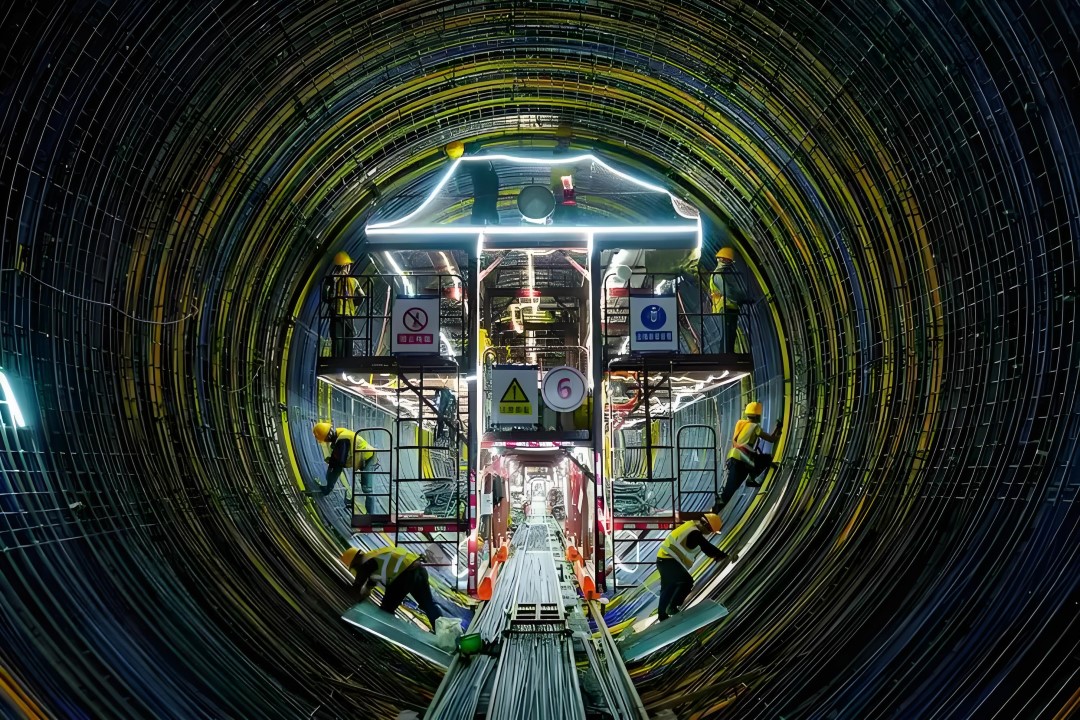The impact of urban underground construction (such as subways, utility corridors, and tunnels) on urban traffic can be divided into the short-term construction phase and the long-term operational phase, requiring a comprehensive analysis in conjunction with management measures. The following are specific impacts and countermeasures:

I. Direct Impacts of the Construction Phase
1. Road Resource Occupancy and Reduced Capacity
① Construction barriers occupy lanes, narrowing roads and increasing intersection saturation. For example, in Anqing City, due to simultaneous construction on over 20 roads in 2024, peak traffic speeds dropped to 60% of the network average, resulting in significant delays.
② The accumulation of construction machinery and materials further squeezes space, increasing safety risks for non-motorized vehicles and pedestrians.
2. Traffic Congestion and Detour Pressure
① Construction closures force vehicles to divert to surrounding road networks, exceeding their carrying capacity and causing regional congestion.
② According to a survey, 76% of citizens voluntarily detour due to construction, but these detour routes may lack effective planning.
3. Safety Hazards and Accident Risks
① Lack of warning signs and insufficient safety personnel in construction areas can easily lead to traffic accidents (e.g., construction on Longmianshan Road in Anqing City went unsupervised for over a month).
② Inadequate nighttime lighting and non-standard closed facilities exacerbate risks.
4. Repeated Excavation and Public Dissatisfaction
Some roads have been repeatedly excavated for pipeline renovations and environmental protection measures, resulting in waste of resources and repeated traffic interruptions, leading citizens to question the rationality of the planning.
II. Difficulties in Traffic Management During Construction
1. Inadequate Planning and Coordination
① Some projects were not submitted for approval in advance, or approvals were perfunctory, leading to a disconnect between construction and traffic management.
② Lack of scientific traffic flow forecasts for construction sections resulted in chaotic temporary traffic management.
2. Delays and Inefficiency
Improper deployment of machinery and personnel led to slow construction and prolonged road occupancy (e.g., semi-closed roads with no work for extended periods).
3. Damage to public transportation and pedestrian systems
Bus lanes are occupied and stops are relocated, impacting public transportation reliability; pedestrian access is interrupted, reducing pedestrian convenience.
III. Optimization Strategies and Countermeasures
1. Strengthening Full-Cycle Management
① Planning Phase: Coordinate pipeline layout to avoid duplicate excavation; utilize BIM technology to simulate traffic impacts.
② Construction Phase: Implement work schedules (avoiding peak hours) and staged construction to reduce concentrated congestion.
2. Scientific Traffic Management
① Develop detour plans and bus priority lanes, and add temporary traffic lights.
② Promote smart navigation to push real-time construction information to guide citizens around.
3. Safety and Environmental Measures
① Mandatory installation of warning signs, dust and noise reduction equipment, and dedicated safety officers.
② Use low-vibration equipment (such as hydraulic picks) and isolation barriers to minimize impact on surrounding areas.
4. Public Communication and System Improvement
① Publicize construction plans and solicit public opinion, establishing complaint feedback channels.
② Enforce the responsibilities of the Road Traffic Safety Law and strictly punish illegal road occupation.
Underground construction is a necessary process for urban renewal, and short-term pain can be alleviated through refined management and technological innovation. The core conflict lies in balancing "construction efficiency" with "people's livelihood experience." Going forward, we must promote cross-departmental collaboration (planning, transportation, and municipal administration), smart construction (such as remote sensing monitoring of shield tunneling), and public participation mechanisms to achieve a win-win situation for urban resilience and development.





